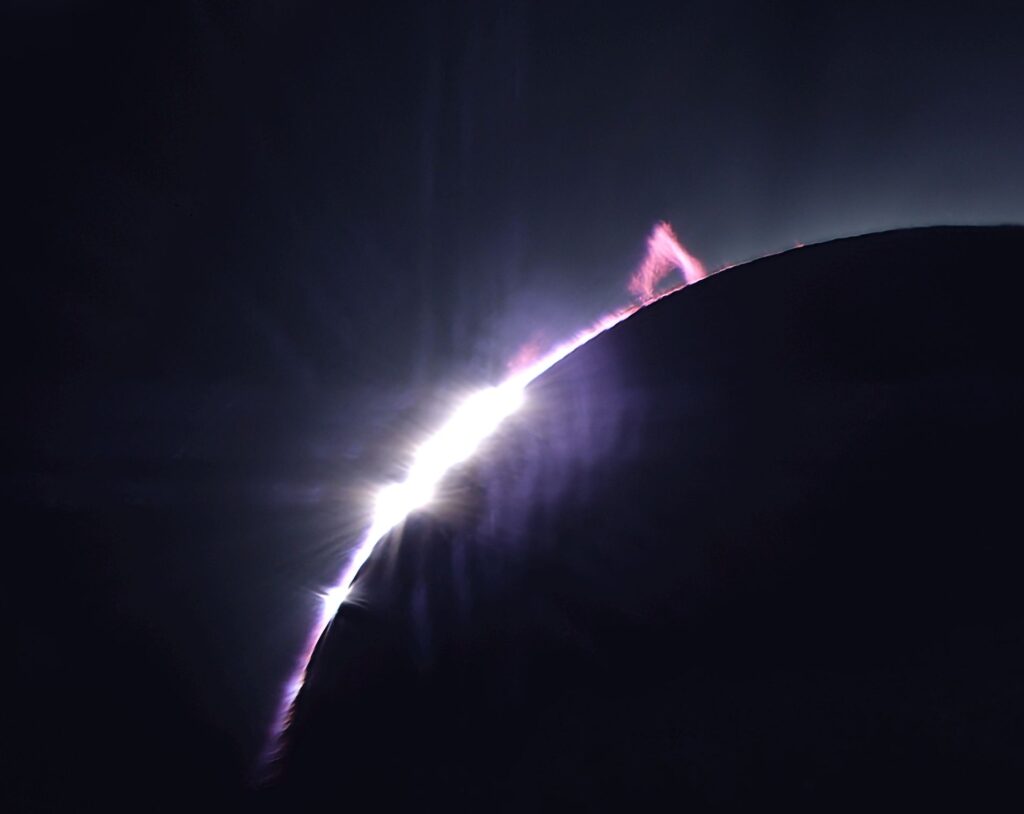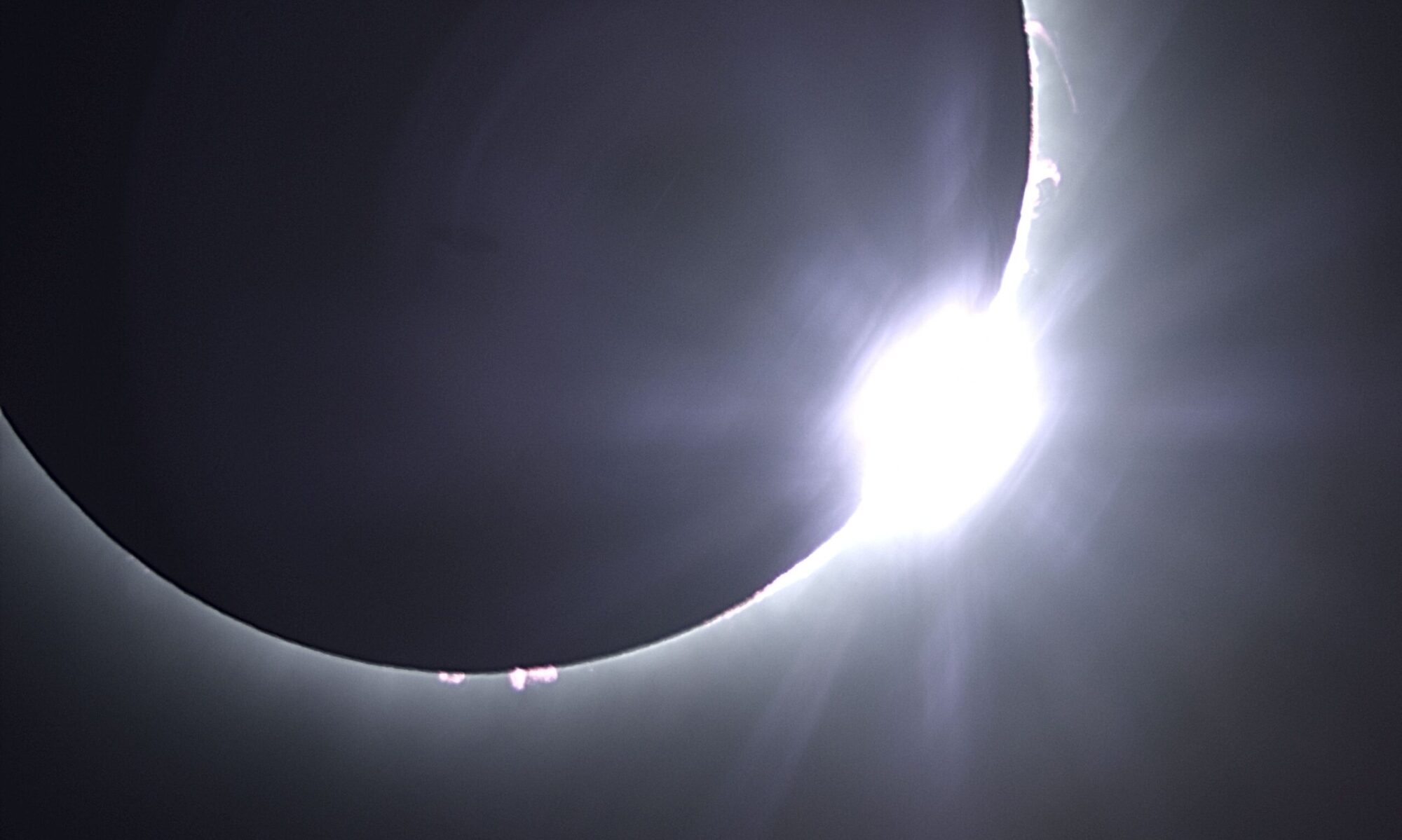Because the Moon’s surface is not perfectly smooth, for a very short time as the eclipse enters totality we see the last vestiges of the Sun’s bright photosphere shining through valleys and low points on the Moon’s edge. They appear as bright ‘beads‘, on the edge of the Moon and were first reported and explained by Sir Edmund Halley in 1715. However, they are named for English astronomer Francis Baily, who described the phenomenon in great detail at a meeting of the Royal Astronomical Society in 1836.
TTU student Lily Ledford’s project was to capture Bailey’s Beads for the 2024 eclipse. She did this by recording images at about 20 frames per second using a color camera on a 1260 mm focal length telescope while the eclipse was entering totality. From these she combined several frames from different stages of the development of the beads to produce the four images below. All of this occurred of a period of only about 4 seconds. (The pink structures are solar prominences, which were the subject of Evelyn’s and Aaron’s projects.)
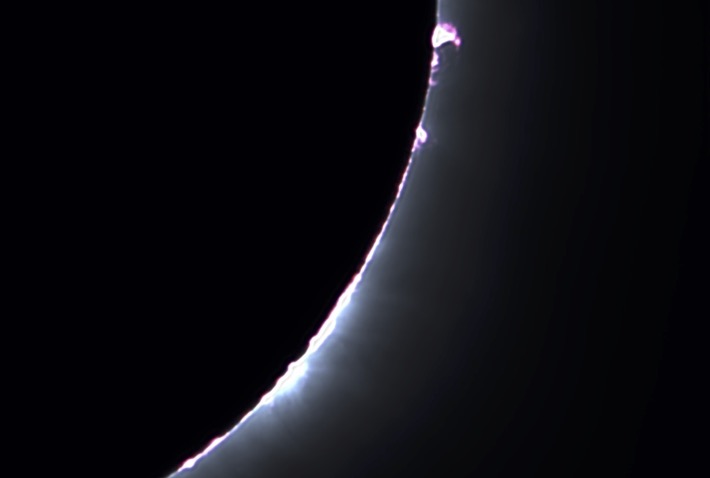
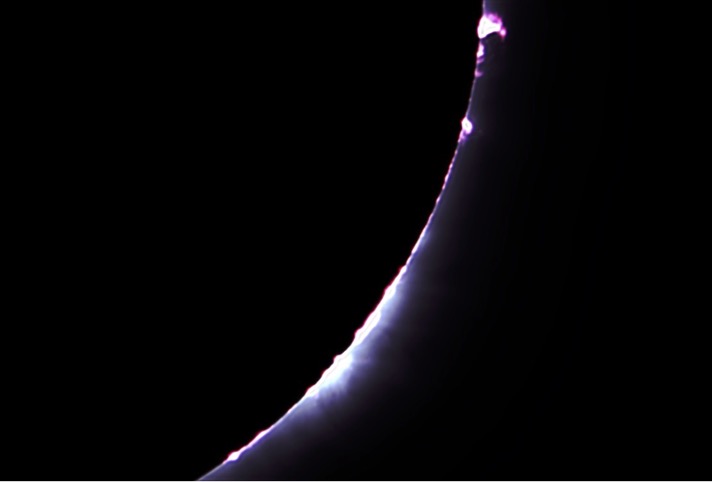
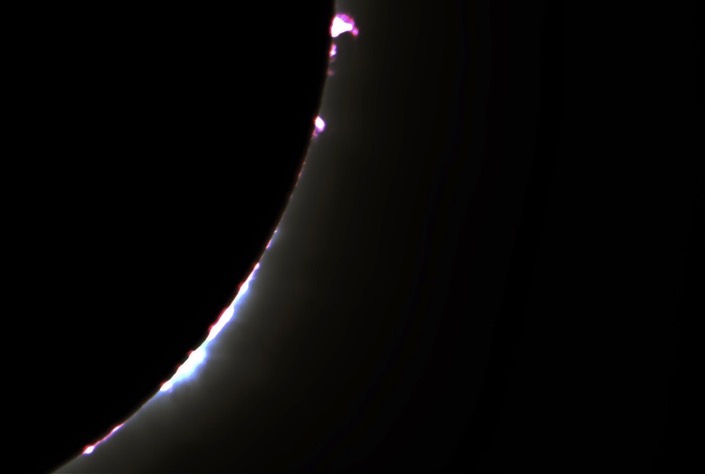
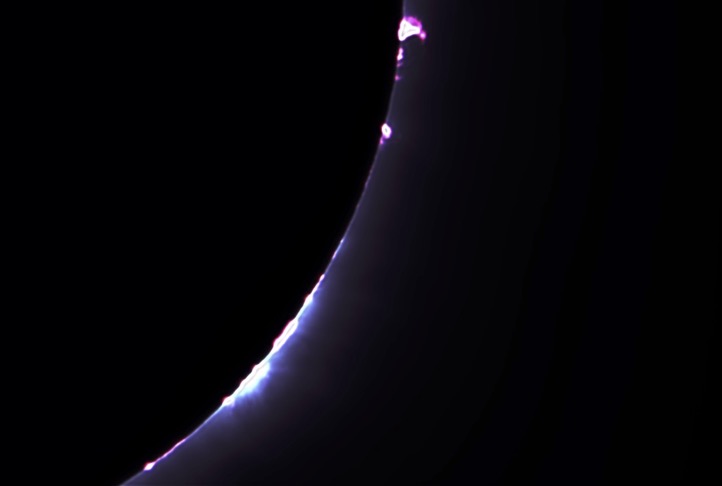
The same thing occurs in reverse at the end of totality as a different part of the Moon begins to let the bright photosphere shine though its valleys and low spots. The image below is just a single frame taken as this occurred.
